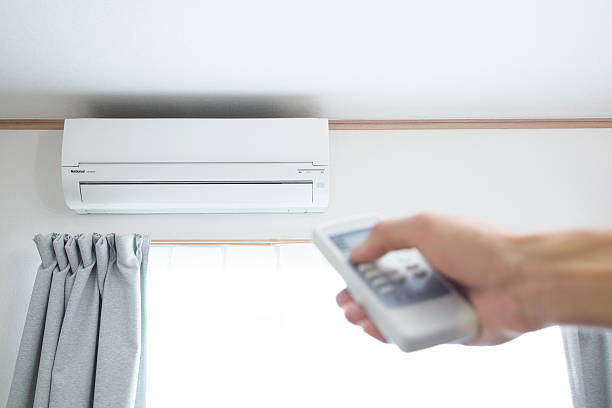
Professional mini-split installation in Portsmouth, VA is crucial for achieving efficient, zoned heating and cooling. Our meticulous process includes a thorough site assessment and precision sizing, ensuring the system perfectly matches your property's unique needs and prevents common HVAC issues. We strategically place indoor and outdoor units for optimal performance and comfort. The physical installation is expertly performed, followed by rigorous system commissioning and quality assurance checks, guaranteeing your new mini-split operates at peak efficiency for its entire lifespan.
Professional Mini-Split Installation in Portsmouth, VA
Choosing a ductless mini-split system is an excellent decision for achieving flexible, zoned, and highly efficient heating and cooling in your Portsmouth home or business. However, the remarkable benefits of this technology—from whisper-quiet operation to significant energy savings—are entirely dependent on the quality of the installation. A precise, professional installation is not just a final step; it is the foundational element that ensures your system performs reliably and efficiently for its entire lifespan. An improper setup can lead to reduced performance, higher energy bills, and even premature system failure.
Our approach to mini-split installation is meticulous and tailored to the unique characteristics of your property. We understand that every space has different heating and cooling demands, and our process is designed to deliver a customized solution that maximizes comfort, efficiency, and long-term value. From the initial assessment to the final system test, our focus is on technical excellence and ensuring your new system integrates seamlessly into your home.
The Importance of a Thorough Site Assessment
The installation process begins long before any tools are picked up. The first and most critical phase is a comprehensive on-site consultation and assessment. During this stage, our experienced technicians evaluate your Portsmouth property to understand your specific comfort needs and the building's unique layout.
We will discuss which rooms or zones require conditioning, your usage patterns, and any specific challenges, such as rooms with high ceilings, large windows, or poor insulation. We inspect the structural integrity of potential mounting locations for both the indoor and outdoor units, identify the best routes for refrigerant and electrical lines, and ensure the proposed setup complies with all local building codes. This initial evaluation is crucial for designing a system that is not only effective but also aesthetically pleasing and minimally invasive to your home's structure.
Precision Sizing for Optimal Performance
One of the most common mistakes in HVAC installation is improper system sizing. A unit that is too large will short-cycle—turning on and off frequently—which wastes energy, creates uncomfortable temperature swings, and fails to adequately dehumidify the air. A unit that is too small will run constantly without ever reaching the desired temperature, leading to excessive wear and tear and high utility costs.
To prevent these issues, we perform detailed load calculations based on industry-best practices. This calculation considers numerous factors, including the square footage of the space, window size and type, insulation levels, ceiling height, local Portsmouth climate data, and the number of occupants. By precisely matching the capacity of the mini-split system to the specific load requirements of your space, we guarantee optimal efficiency, superior comfort, and improved indoor air quality.
Strategic Placement of Indoor and Outdoor Units
Where the components of your mini-split are placed has a significant impact on performance and your daily comfort.
Indoor Unit (Air Handler): The placement of the indoor unit is critical for effective air distribution. We position the unit high on an exterior wall, free from obstructions, to ensure conditioned air circulates evenly throughout the room. We also consider factors like proximity to your seating areas to avoid direct drafts and easy access for routine filter cleaning. Our goal is to find a location that is both functionally optimal and discreet.
Outdoor Unit (Condenser): The outdoor condenser needs a stable, level surface and adequate clearance on all sides for proper airflow and heat exchange. We will help you select a suitable location that minimizes noise impact on you and your neighbors, is protected from debris, and allows for easy access for future maintenance and service.
The Meticulous Installation Process
Once the planning is complete, our skilled technicians proceed with the physical installation, adhering to the highest standards of craftsmanship.
- Mounting the Units: We securely fasten the mounting plates and brackets for both the indoor and outdoor units, ensuring they are perfectly level and stable.
- Creating the Conduit Path: A small, three-inch hole is carefully drilled through the exterior wall to connect the indoor and outdoor components. This opening accommodates the refrigerant lines, condensate drain line, and electrical wiring.
- Connecting the Components: The refrigerant lines are expertly run between the units and connected with precision. We then install the condensate drain line, ensuring it has the proper pitch to allow gravity to effectively remove moisture from the indoor unit.
- Electrical Connections: All electrical work is performed carefully and correctly by qualified technicians. We ensure the system is connected to a dedicated circuit with the proper voltage, adhering strictly to all safety protocols and electrical codes to guarantee safe, reliable operation.
- Finalizing and Sealing: After all lines are connected, the exterior hole is completely sealed with high-quality sealant and covered with a cap to prevent air leaks, moisture intrusion, and pest entry.
System Commissioning and Quality Assurance
The installation is not complete until we have thoroughly tested and commissioned the system. This final quality assurance phase ensures every component is working perfectly. We perform a pressure test on the refrigerant lines to check for leaks, use a vacuum pump to remove all air and moisture from the lines, and then charge the system with the precise amount of refrigerant specified by the manufacturer.
Finally, we power on the unit and test its full range of functions—cooling, heating, dehumidification, and fan modes. We verify that airflow is strong, the unit is operating quietly, and the condensate drain is working correctly. We only consider the job finished when we have confirmed your new mini-split system is performing at peak efficiency and delivering the comfort you expect.









